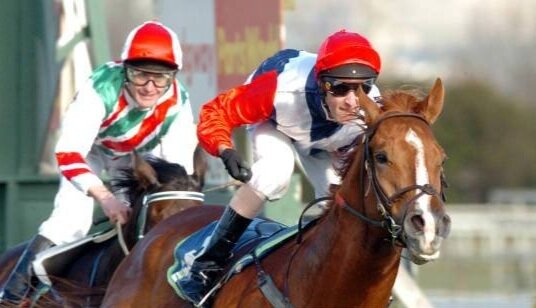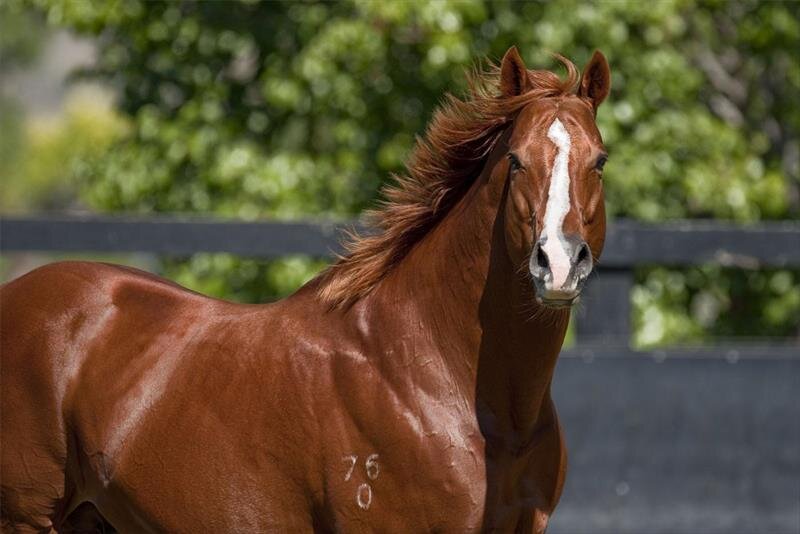Tarzino Trophy Countdown: Number 2 - Starcraft 2004
The first Group 1 of the New Zealand racing season always brings a great deal of excitement. As we get closer to the running of the 2020 Tarzino Trophy, we are taking a look at the top 10 performances in the race since the turn of the century.
First run in 1985 when named the Challenge Stakes, all through the years this race has attracted an extremely strong field. Given it is early in the season at Weight-For-Age conditions over 1400m, horses of the highest echelon use this race as a springboard to campaigns both in New Zealand and Internationally.
Previously named the Mudgway Stakes, the Mudgway Challenge Stakes and the Makfi Challenge Stakes, the race was renamed the Tarzino Trophy in 2017. Tarzino - a former Victoria Derby and Rosehill Guineas winner - now stands at Westbury Stud.
We have been blessed in this race to watch some amazing horses at the top of their game, and the fact this incredible performance in 2004 by Starcraft is only at Number Two shows what is to come at Number One!
Although doing most of his racing overseas, his connection was rooted to New Zealand. Bred by Waikato Stud’s Gary Chittick from his Pompeii Court mare Flying Floozie, his sire was the high class American bred, French trained entire Soviet Star. He shuttled once to New Zealand in 1999 and produced this standout star.
He was purchased by an Australian syndicate headed by Paul Makin when he was put through the ring by Waikato Stud. The hammer fell at $80,000 in another story of ridiculously good value with hindsight.
Taken across the ditch to be trained by Gary Newham, it wasn’t immediately clear that this colt would be high class.
He took five starts to shed his maiden tag, when he won at Doomben as a 3yo.
That would catapult him to a sensational run of form, culminating in winning the Group 1 AJC Derby over 2400m at Randwick. In between his maiden win and victory in the Derby, he’d collect the Debonair Stakes (Group 3, 1400m), the Chipping Norton (Group 1, 1600m), The Tulloch (Group 1, 2000m) and run second in The Flemington Guineas (Group 1, 1600m).
In a very respectable nod to his country of birth, following his Australian exploits connections announced that their galloper would return to New Zealand for a shot at the Hastings Triple Crown.
Aside from this multiple Australian Group 1 winning colt, the 2004 Mudgway Partsworld Stakes drew a field with as much quality as has been seen.
King’s Chapel was a high class horse, a previous three time Group 1 winner and had taken out the Gold Coast Guineas in his previous preparation. He’d have to contend with a very wide barrier draw.
Irish Rover was a multiple Group winner, with a stack of close-up Black Type form. He’d drawn an ace barrier of five.
Balmuse was approaching the peak of his powers and had strung six wins on the bounce coming into the race.
Miss Potential had enjoyed a very good Australian campaign at the highest level and had won the race the previuos year.
The up and comer Kalamata had fashioned a record of six wins from eight starts, including four in a row before lining up for the race.
Jumping from barrier 12, it wouldn’t be easy for the visitor. Jockey Leith Innes settled him into a spot a little worse than midfield sandwiched between two runners for the first half of the race.
The warning signs were flashing as Penny Gem held them in from the 800m, Innes couldn’t get out into clear air.
They were pinned in that pocket all the way until they turned, with the front runners surging further in front all the time.
When you’re the better part of eight lengths off a Group 1 field with 250m to run, only a very special type of animal will be able to win from there.
Now fully balanced and into overdrive, the showy chestnut with the four white socks grew wings and he flew. In an amazing burst of acceleration he screamed right over the top of them to score in breathtaking fashion.
This was clearly one of the best performances this race has ever witnessed, and in New Zealand racing as a whole.
From here he would land the second leg of the Triple Crown when he won the Stoneybridge Stakes (Group 1, 1600m). He’d be undone by Balmuse, in an upset in the final leg.
He’d return to Aussie to aim up at the Cox Plate and back up a week after his last Hastings run in the Yalumba Stakes (Group 1, 2000m) for third.
He was installed favourite for the feature at The Valley, but he managed only third. The race that year was won by Savabeel.
The ownership group were an ‘aim high’ bunch and they would press on for plans to race the horse in the Northern Hemisphere.
He’d travel to Europe and come under the care of the legendary trainer Luca Cumani from his Newmarket base in England.
He was probably an unfashionable type on those shores, but when he was able to run third first up in the Queen Anne Stakes (Group 1, 1600m) at Royal Ascot, he announced himself as more than capable up there.
Showing how very good he was, he surprised many Northern Hemisphere race fans with his dominance when he won the Prix du Moulin (Group 1, 1600m) at Longchamp, Paris.
He proved this was no fluke, and that he was the dominant miler in Europe, when winning the Queen Elizabeth II Stakes (Group 1, 1600m) which was held at Newmarket because Ascot was being refurbished at the time. That day he beat the might of Dubawi. This was his 11th win from 22 race starts and his fifth Group 1 success.
Continuing his globe-trotting experiences, the owners paid a US$800,000 late fee to enter him into the Breeders Cup Classic at Belmont Park in America. Having done all of his racing on turf, the dirt surface he would encounter was seen to be a huge gamble. Victory didn’t eventuate, but he was able to run a very creditable seventh given the circumstances.
The American outing would prove to be his last on a racetrack, as connections dediced to retire their phenomenal star after that. He had raced 22 times, for 11 wins of which five were Group 1’s. He’d earned over A$3million in prizemoney.
He began his stud duties at Cheveley Park in England, before being taken back down to Australia to stand firstly at Arrowfield Stud and now at Rosemont Stud.
He has sired a total of 767 foals, with 365 of them being winners. 20 of them have won at Stakes level and 12 at Group level. He can count Group 1 winners Star Witness and We Can Say It Now as a part of his progeny.
On the strength of the performance on the 2004 Mudgway Partsworld Stakes alone, but because of his brilliant record on both sides of the world in addition, Starcraft thoroughly deserves to go down in Tarzino Trophy history.
Our Number 2 since the turn of the millennium is Starcraft!




